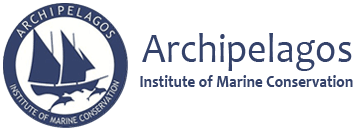Archipelagos GIS team is mapping Posidonia oceanica seagrass meadows in several areas of the SE Aegean. Archipelagos Institute in cooperation with the University of West of England Bristol during recent years developed a technique to map Posidonia oceanica seagrass. Data is collected with the use of kayaks that are equipped with sonar that can detect the presence of seagrass along predefined transects.

In combination with data collected from drones and satellite, the data collected by kayaks is used to create a detailed habitat maps that depict the distribution of Posidonia meadows using Geographic Information Systems.
Archipelagos Institute has trained, in cooperation with the UNEP/MAP – SPA/RAC (The Regional Activity Centre for Specially Protected Areas of the UN Environment Programme), scientists from countries of North Africa, in this low cost and high-performance mapping technique. While every year it continues to train many young scientists from all over the world.
Without detailed maps showing the location of Posidonia meadows, it is impossible to enforce any protection, so the Archipelagos GIS team works hard to promote the enforcement of the existing legislation to protect our forests and seas, before it’s too late!
The forests of Posidonia are increasingly damaged by human activities such as the continuous and uncontrolled mooring, illegal fishing (outside fishing zones) with towed fishing gear (trawlers, seiners) and many more.
The effects are numerous and profoundly felt, so much in the productivity and the health of our seas as well as the erosion of beaches. When the rooting system of Posidonia seize to exist, winter storms erode beaches and ultimately cause them to disappear.
The effects are numerous and profoundly felt, so much in the productivity and the health of our seas as well as the erosion of beaches. When the rooting system of Posidonia seize to exist, winter storms erode beaches and ultimately cause them to disappear.



